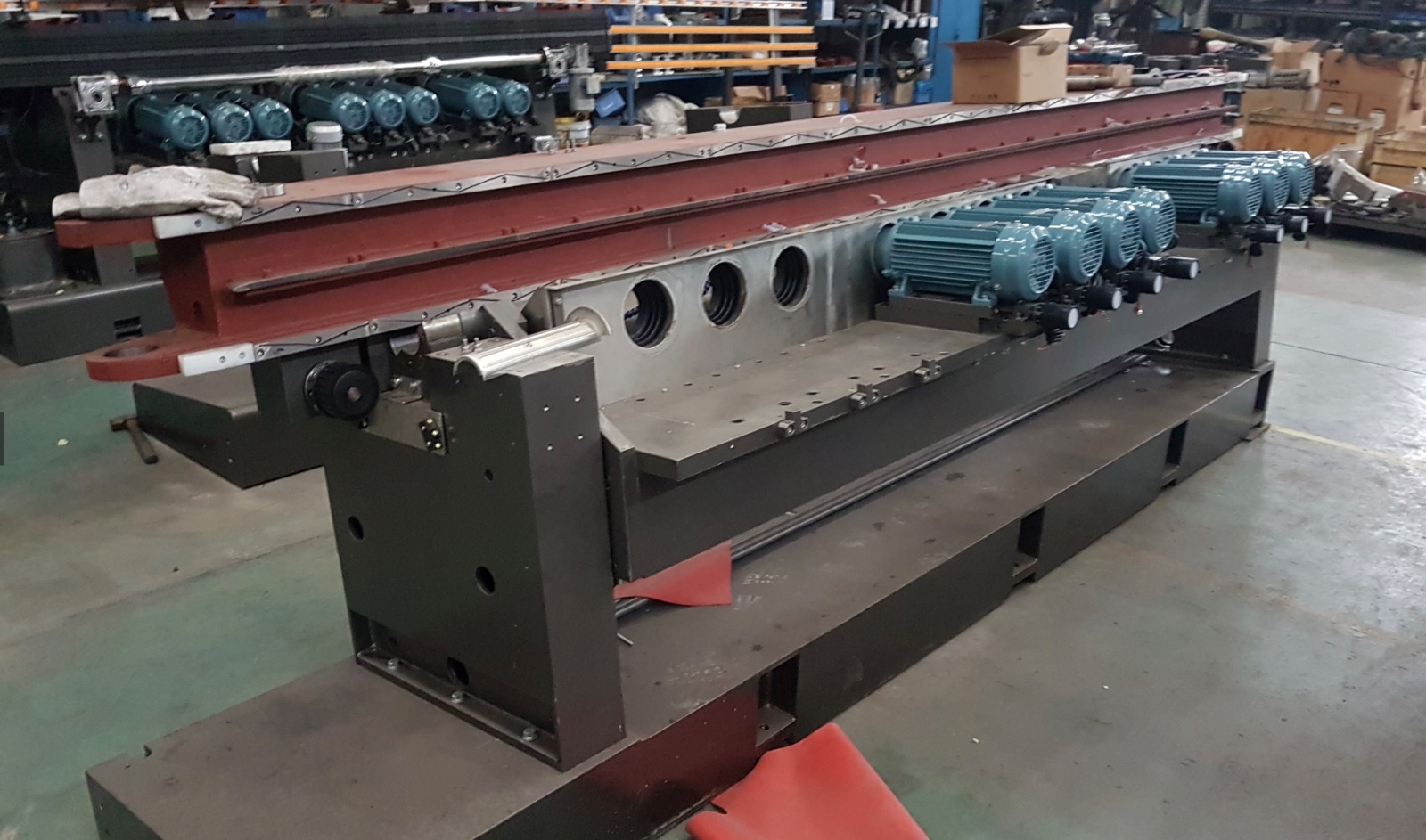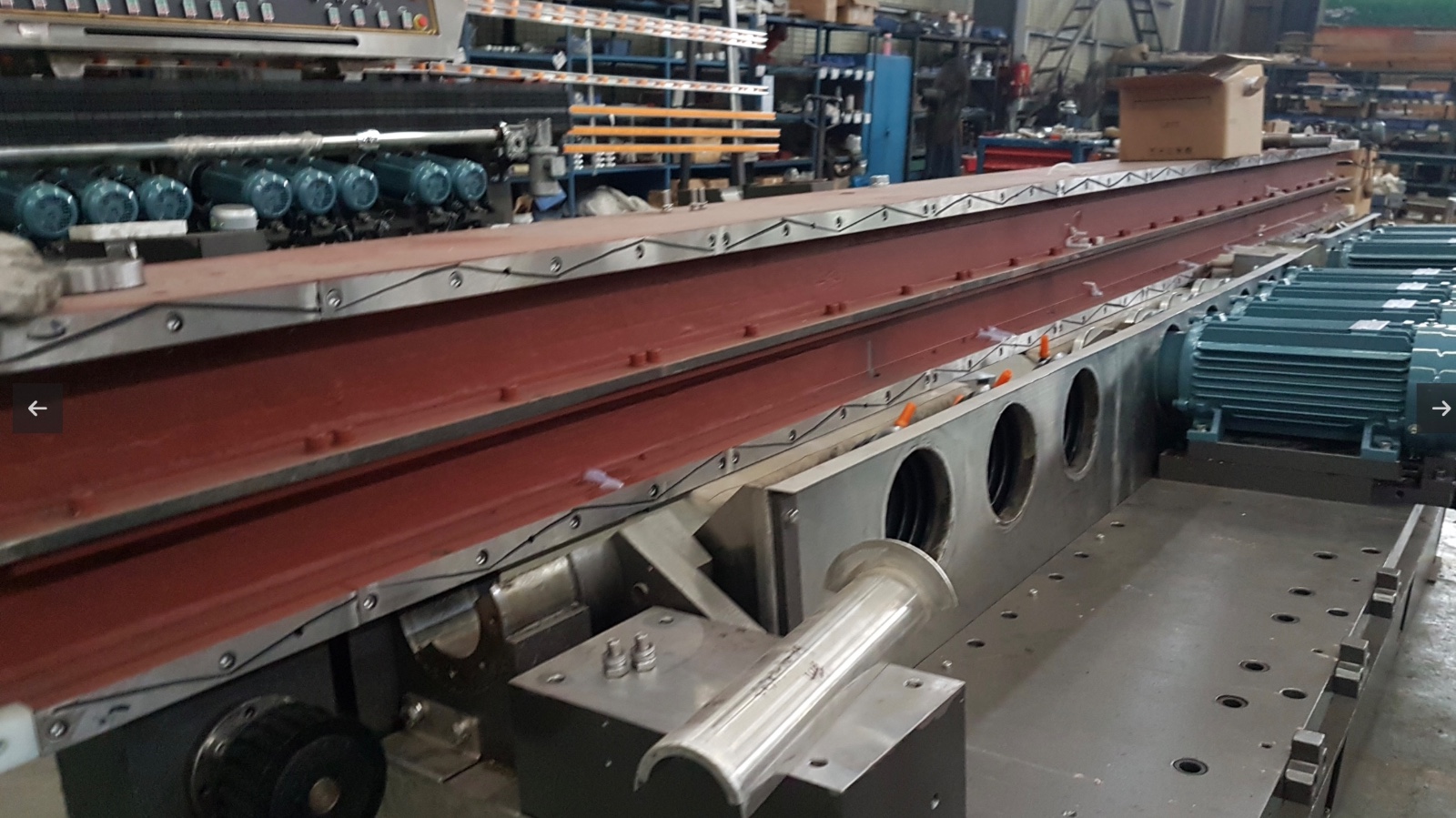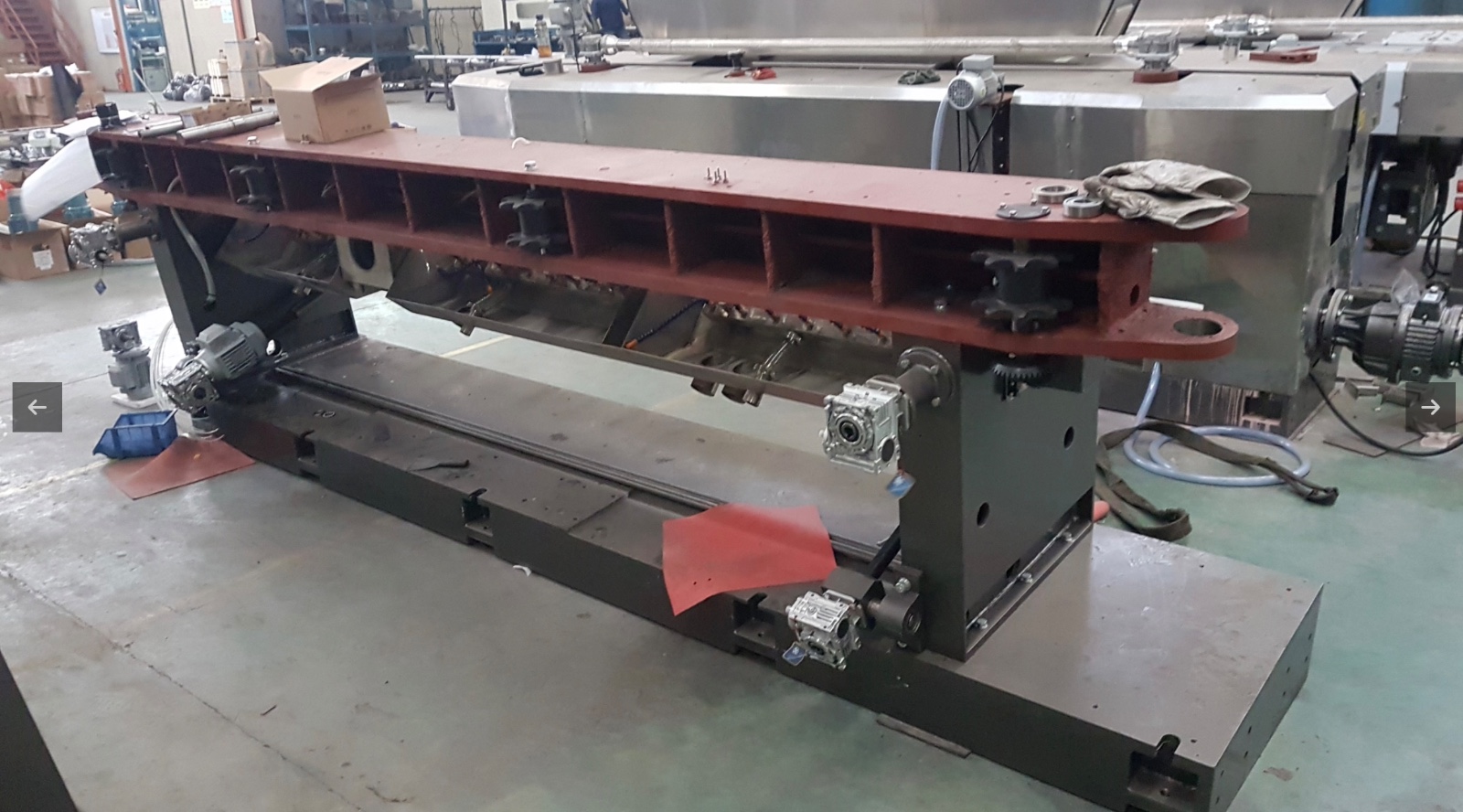


The glass straight - line beveling machine operates based on the principle of abrasive grinding and polishing. The glass processing machine uses a series of grinding wheels and polishing wheels to remove the glass material along the edge and create the desired bevel angle. When the glass sheet is fed into the machine through the conveyor system, the grinding wheels, which are usually made of diamond - impregnated or other abrasive materials, start to rotate at high speeds. The rotation of the grinding wheels generates friction against the glass edge, gradually grinding away the glass to form the bevel shape.
For example, in a typical glass straight - line beveling machine , the first few grinding wheels are used for rough grinding. They have coarser abrasive particles and are capable of quickly removing a large amount of glass material to shape the basic bevel contour. As the glass progresses along the machine, the glass edging machine passes through finer - grained grinding wheels for fine grinding. These wheels smooth out the surface of the bevel, reducing the roughness and preparing it for the final polishing stage.
The polishing wheels, often made of felt or other soft and polishing - friendly materials, are then used to give the beveled edge a smooth and shiny finish. These wheels are usually driven by pneumatic or electric motors and rotate in a way that they can evenly distribute the polishing force on the glass bevel, resulting in a high - quality, mirror - like surface.
Low - Grinding - Wheel Machines: These glass edging machines typically have 7 - 9 grinding wheels. They are suitable for small - scale glass processing workshops or for processing glass with relatively simple beveling requirements. For example, in a local glass - cutting shop that mainly produces basic beveled glass for small - sized mirrors or picture frames, a 7 - wheel beveling machine can be sufficient. The advantage of these machines is their relatively low cost and simplicity of operation. However, due to the limited number of grinding wheels, the processing efficiency may be lower compared to machines with more wheels, and the quality of the beveled edge may not be as high in terms of smoothness and precision.
•Medium - Grinding - Wheel Machines: Machines with 10 - 13 grinding wheels are more commonly used in medium - sized glass processing enterprises. The glass edging machines offer a better balance between processing efficiency and quality. With a larger number of grinding wheels, they can perform more comprehensive grinding and polishing operations. For instance, the glass processing machine can achieve a more refined bevel shape and a smoother surface finish. These machines are suitable for processing glass for a wider range of applications, such as glass tabletops, shower doors, and decorative glass panels in commercial buildings.
•High - Grinding - Wheel Machines: Machines equipped with 14 or more grinding wheels are usually high - end models. They are designed for large - scale glass processing plants that require high - volume production and extremely high - quality beveled glass products. These glass processing machines can complete the rough grinding, fine grinding, and polishing processes more efficiently and precisely. For example, in a large - scale glass manufacturing factory that supplies glass for high - end architectural projects, a 14 - wheel or more beveling machine can ensure that the glass edges meet the strictest quality standards. The additional grinding wheels allow for more complex beveling operations, such as creating multi - step bevels or bevels with very specific angles and widths.
Semi - automatic beveling machines have some degree of automation. The edging machine usually have a control panel that allows the operator to set certain parameters, such as the bevel angle and glass thickness. Once the parameters are set, the machine can automatically adjust some of the processing operations, such as the movement of the grinding heads according to the set bevel angle. These machines are more suitable for small - to - medium - sized glass processing enterprises that need to improve processing efficiency while still maintaining some level of flexibility. For example, a small - scale glass factory that produces beveled glass for local furniture manufacturers can use semi - automatic machines to increase production speed compared to manual control machines, while still being able to handle different product specifications.

